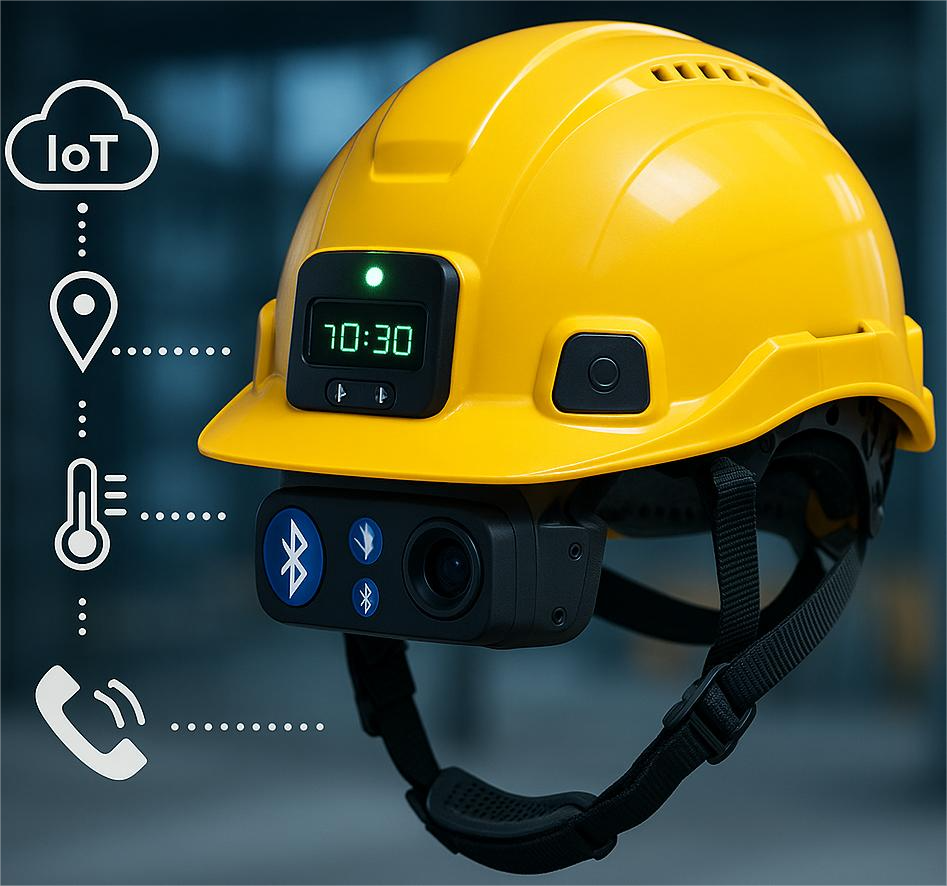Beyond The Shell: How Smart & Connected Safety Helmets are transforming Head Protection in 2025:
Smart and Sustainable: How Next-Gen Safety Shoes Are Redefining Worker Comfort and Protection in 2025
October 15, 2025How to Build a Zero-Accident Workplace: A Complete Safety Strategy for All Industries
November 22, 2025The New Era of Smart Safety Helmets
In 2025, head protection has gone far beyond the basic hard hat. The traditional helmet is now smarter, safer, and more connected than ever. With the rise of smart safety helmet IoT systems, companies are using data and technology to protect workers in real time. The latest safety helmet trends 2025 show how innovation and comfort are shaping the future of industrial safety.
Modern helmets are becoming an essential part of connected workplaces. These connected helmet wearable PPE devices come with sensors, GPS, and communication tools that alert supervisors instantly in case of danger.
They can detect impacts, monitor air quality, track a worker’s location, and even send emergency alerts through wireless networks.
With smart safety helmet IoT technology, safety is no longer just reactive — it’s proactive. Companies can now track what’s happening on-site and prevent accidents before they occur.

Advanced Protection with MIPS Technology
Another important step forward is the use of rotational force protection helmet MIPS systems. MIPS stands for Multi-directional Impact Protection System — a thin, low-friction layer inside the helmet that reduces the rotational motion caused by angled impacts.
This helps protect the brain from injuries that standard helmets cannot prevent. Earlier used in sports helmets, MIPS is now being widely adopted in industrial helmets to give workers better safety in high-risk environments like construction, mining, and manufacturing.
Comfort and Ventilation for Everyday Use
Safety only works when workers actually wear their gear. That’s why industrial helmet ventilation comfort has become one of the key focus areas in new designs.
Helmets now feature improved airflow systems, lighter materials, and sweat-absorbing liners that make them more comfortable for long shifts — especially in hot countries like India.
Better ventilation and fit mean workers can stay safe without discomfort, leading to higher compliance and fewer safety violations.
Standards and Regulations in India
With India’s growing construction industry, compliance with safety helmet India construction standards is essential.
The Bureau of Indian Standards (BIS) provides the main guidelines under IS 2925:1984, covering impact resistance, design, and quality checks.
Now that connected helmet wearable PPE and smart safety helmet IoT products are entering the market, these standards will continue to evolve — adding rules for electronic components, battery safety, and connectivity performance.
This ensures that future helmets meet both traditional safety requirements and modern technology needs.
Connected Helmets for Smarter Worksites
The latest safety helmet trends 2025 are leading to fully connected worksites.
Through smart safety helmet IoT systems, every helmet becomes a data source. Supervisors can view live information from all workers, track exposure to heat or gas, and even predict risks before they happen.
This connected helmet wearable PPE approach helps companies move from reactive safety to predictive safety — saving time, money, and lives.
It’s also an important step toward building a culture of awareness and accountability on every job site.
The Future of Head Protection
The future of helmets is not just about stronger shells — it’s about intelligent protection. Combining rotational force protection helmet MIPS, industrial helmet ventilation comfort, and smart safety helmet IoT systems gives workers the safest and most comfortable equipment ever designed.
As India’s industries grow, adopting safety helmet India construction standards and investing in connected helmet wearable PPE will be key to building safer worksites.
The safety helmet trends 2025 clearly show that the future of safety lies in connection, comfort, and innovation.
